Every week we get Down & Dirty, in which Nozlee Samadzadeh breaks down our favorite seasonal fruits, vegetables, and more by the numbers.
Did you know that melons are in the same family -- Cucurbitaceae -- as cucumbers, winter squash, and zucchini? Their leaves, flowers, and stems are all similar, though of course the end product is very different. (And no, you can't cross-pollinate a pattypan squash with a honeydew!) Today we're talking all about melons, to give you plenty to think about next time you lug one home from the farmers' market.
A quick word about ripeness: because melons have no external signifiers of ripeness -- size can vary dramatically and the outer skin doesn't change in appearance -- it's hard to tell when they're fully mature. While plenty of people swear by a quick knuckle-rap on a melon's surface, the best way to tell is by turning the melon over: if the yellow-brown patch where the melon lay on the soil is pronounced, large, and dirty, it's a good sign that it has been growing for a while! Try it next time you buy a melon -- I bet it'll work for you.
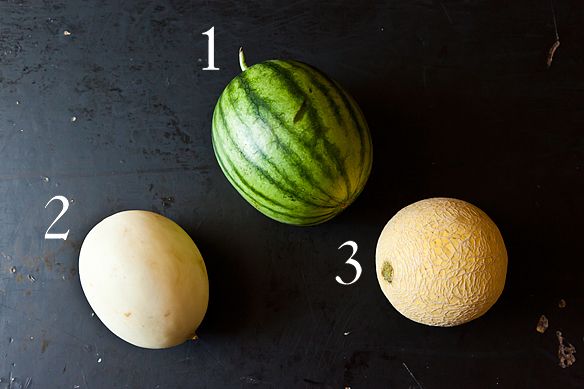
1. Watermelon - Evidence of watermelon plants have been found in the Nile Valley dating back to Egyptian times -- King Tut's tomb had watermelon seeds in it! In the centuries since, watermelon has spread to all parts of the world. But the watermelon you think of when you imagine the fruit is the one developed by USDA horticulturist Charles Fredric Andrus in 1954. Called the "Charleston Gray," it was bred for its large size, sturdiness (for ease of shipping), black seeds, and uniformly pink flesh. While you can find heritage breeds of watermelon at farmers' markets that have light green, dark green, or striped exteriors and flesh ranging from orange to white, the watermelons you find at the grocery store are almost always Charleston Gray descendants.
2. Honeydew - With pale green or white flesh and a smooth, waxy yellow-white surface, honeydew varieties include crenshaws, casabas, and winter melons. The varieties we see most often originated in the south of France as the White Antibes cultivar of the species. As they ripen, honeydews become heavy with their sugars and can even become sticky and spotted on the outside -- this is a good thing! Unlike the soft structure of a watermelon's flesh or the rich feel of a ripe cantaloupe, honeydew flesh is crisp and clean. (The Muppets character Dr. Bunsen Honeydew is so named because his head looks like one!)
3. Cantaloupe - Cantaloupes were first culviated in Iran thousands of years ago. The English name "Cantaloupe," however, orignates in the Italian papal county of Cantalupo that is the supposed spot where it was introduced to Europe. When you've found a good cantaloupe, you should be able to smell its heady, tropical scent from yards away -- their buttery, juicy flesh is best when it's nearly overripe.
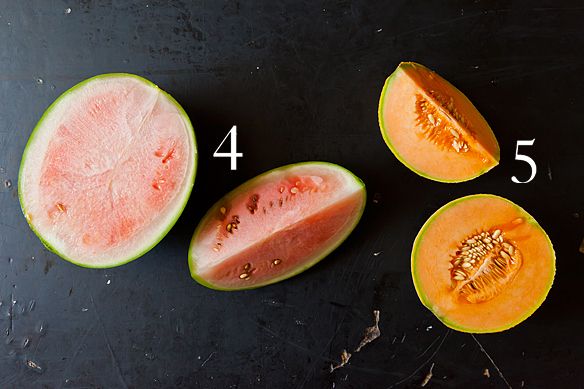
4. Seeds, Take 1 - Watermelon seeds are scattered inside the fruit's flesh. The seeds can range from white to black, which is a function of maturity -- the black seeds are ready to grow into new watermelons. (If you've ever purchased a "seedless" watermelon, you've probably encountered the empty seed coats inside.)
5. Seeds, Take 2 - Cantaloupe and honeydew seeds are helpfully bound together in the middle of the plant and can be easily removed with a spoon. (They're of a different genus than watermelons, although still in the melon family.)
Melon seeds, like all cucurbit seeds, are edible! Kitchen Butterfly brought us ground melon seeds from Nigeria to use in Sasha (Global Table Adventure)'s Smoked Turkey Stewed in West African "Gravy." They can also be roasted and enjoyed as a snack, just like pumpkin seeds.
Melons can skew savory as well as they skew sweet. (Francis Lam at Gilt Taste even caramelizes his watermelon!) Here are a few of our favorite recipes -- you can find many more here.
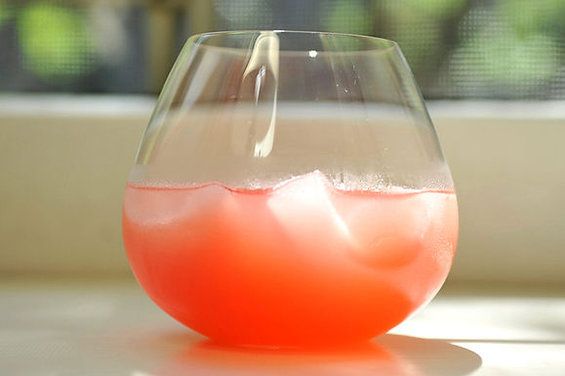
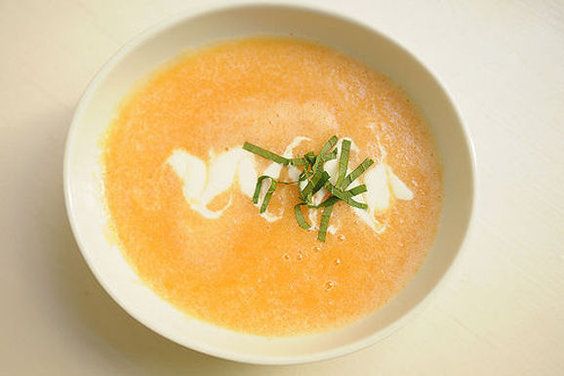
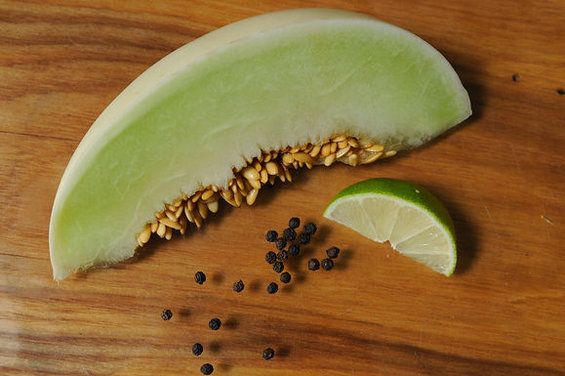






See what other Food52 readers are saying.